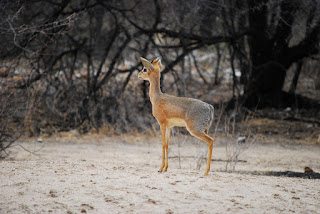Antelope images - An antelope is a member of a number of even-toed ungulate species indigenous to various regions in Africa and Eurasia. Antelopes comprise a wastebasket taxon (miscellaneous group) within the family Bovidae, encompassing those Old World species that are not cattle, sheep, buffalo, bison, or goats. A group of antelope is called a herd. (Wikipedia)
Image Source:
pixabay.com
|
Antelope Images
Images of Antelope
The English word "antelope" first appeared in 1417 and is derived from the Old French antelop, itself derived from Medieval Latin ant(h)alopus, which in turn comes from the Byzantine Greek word anthólops, first attested in Eustathius of Antioch (circa 336), according to whom it was a fabulous animal "haunting the banks of the Euphrates, very savage, hard to catch and having long, saw-like horns capable of cutting down trees". It perhaps derives from Greek anthos (flower) and ops (eye), perhaps meaning "beautiful eye" or alluding to the animals' long eyelashes. This, however, may be a later folk etymology. The word talopus and calopus, from Latin, came to be used in heraldry. In 1607, it was first used for living, cervine animals.The 91 species, most of which are native to Africa, occur in about 30 genera. The classification of tribes or subfamilies within Bovidae is still a matter of debate, with several alternative systems proposed.
Antelope are not a cladistic or taxonomically defined group. The term is used to describe all members of the family Bovidae that do not fall under the category of sheep, cattle, or goats. Usually, all species of the Alcelaphinae, Antilopinae, Hippotraginae, Reduncinae, Cephalophinae, many Bovinae, the grey rhebok, and the impala are called antelopes.
See also: Anteater Images
attention: all images contained on this "Antelope Images" page does not belong to this blog, the images used for information purposes only. If you are the owner of the image above and don't want the picture shown, please contact us and we'll remove it immediately. Thank you
|












No comments:
Post a Comment